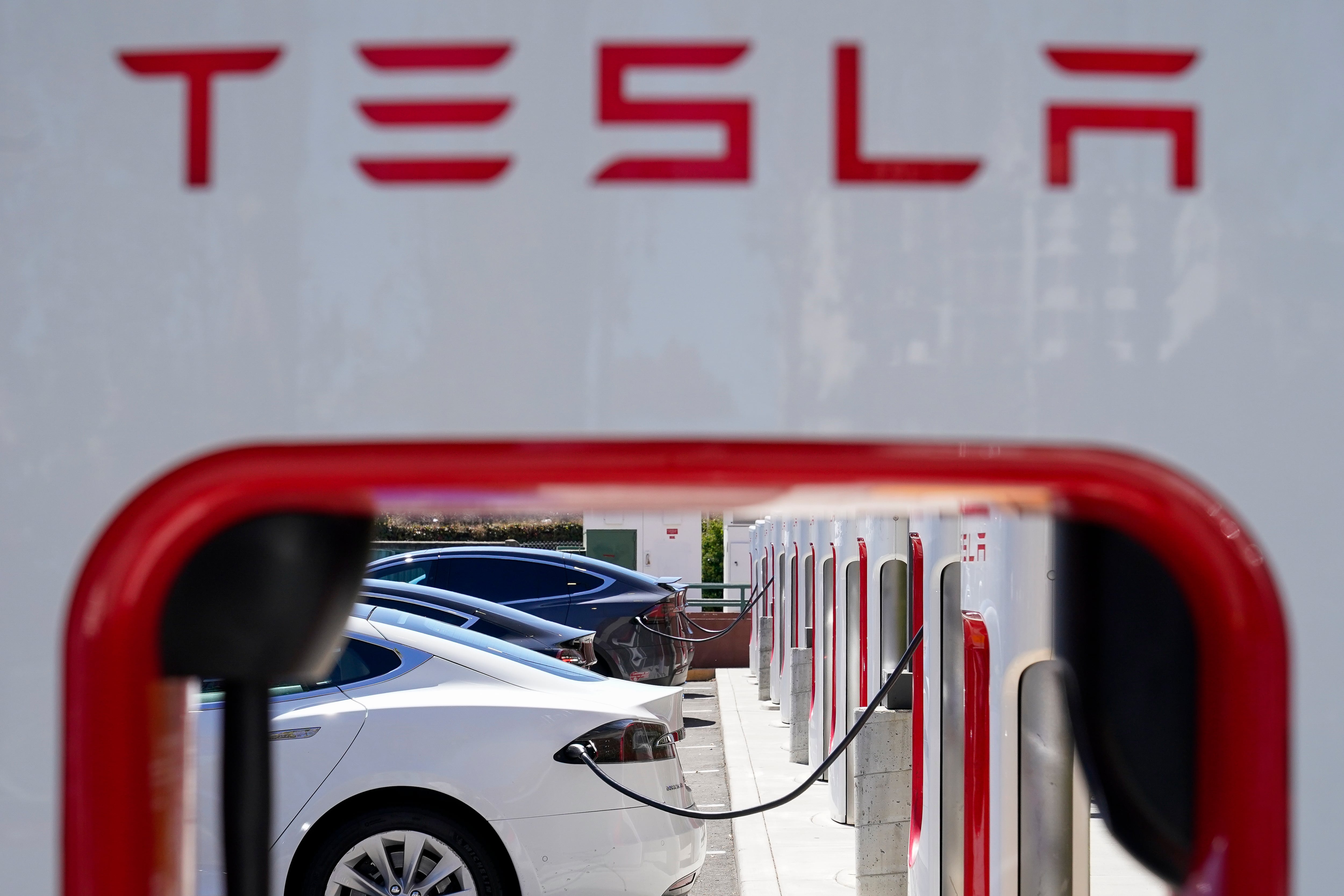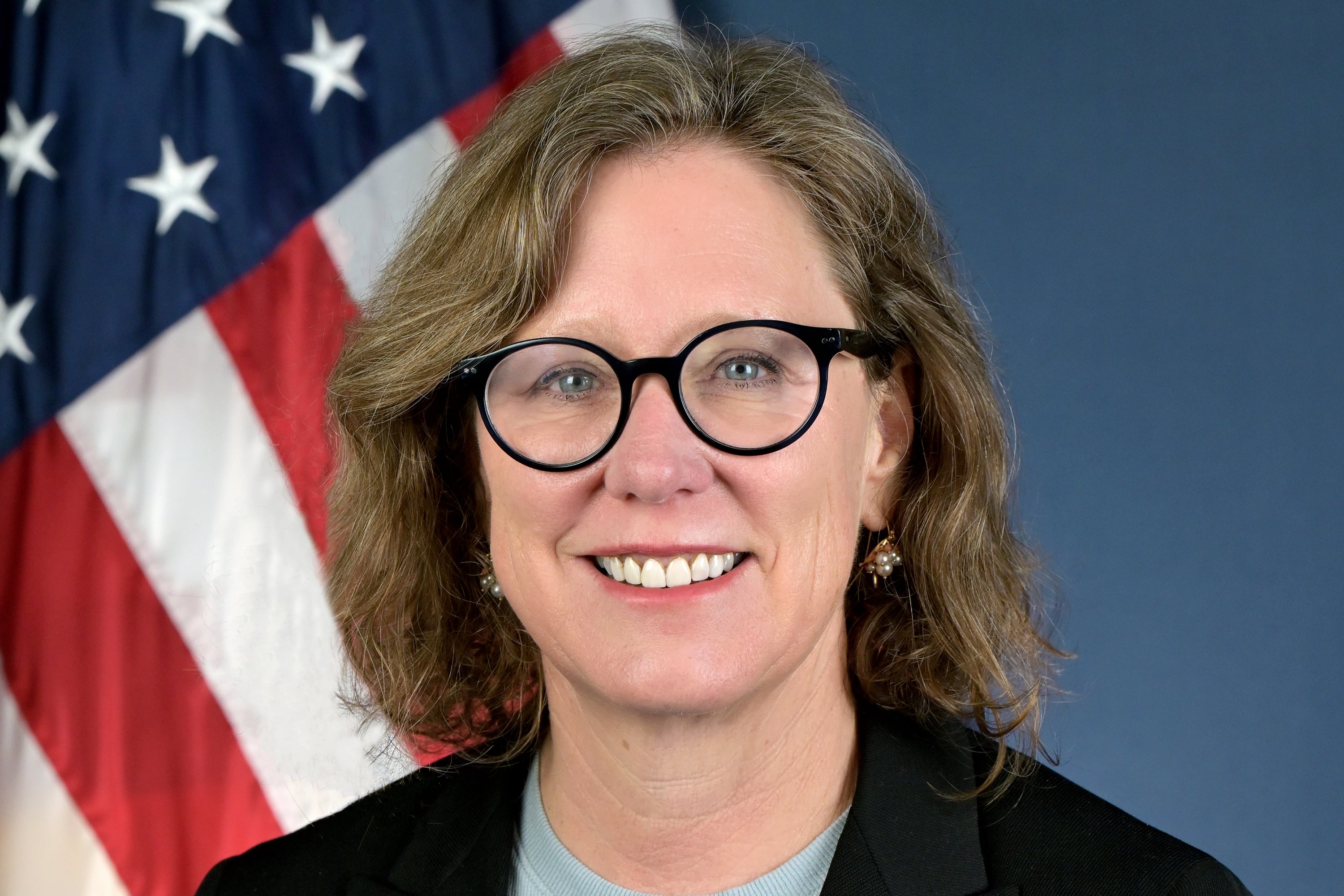In the past 15 months, no one has been more responsible for safety on the nation’s roads than Ann Carlson. For much of that time she has served as acting administrator of the National Highway Traffic Safety Administration, where she started as chief counsel in 2021.
But on Wednesday, Carlson’s time running the agency and as its chief lawyer will come to an end. She’s returning to Los Angeles to resume teaching at the UCLA School of Law.
RELATED

During her tenure, the agency known by the acronym NHTSA has made autonomous vehicle companies and automakers report crashes involving automated systems, creating a large database.
In an interview with The Associated Press, she talked about a recall to address safety problems with Tesla’s Autopilot partially automated driving system, the agency’s quest to get ARC Automotive Inc. to recall 52 million air bag inflators that can explode with too much force, and other issues.
The interview has been edited for length and clarity.
Q: Last month you pressured Tesla into recalling 2 million vehicles with Autopilot because it doesn’t make sure drivers are paying adequate attention to the road. There have been numerous crashes. Two motorcyclists were hit and killed in 2022 by Teslas apparently on Autopilot driving on freeways. How closely will NHTSA look at Tesla’s software update to fix the problem?

A: We’ll look at everything. If you take a look at what we have made available, there are crashes both on and off highway. And they’re both of concern. We need to make sure that drivers are attentive and that they’re not assuming the system is actually sufficient to operate without driver attentiveness. One of the big messages we want to stress over and over again is that drivers need to keep paying attention, but also that a vehicle needs to be designed in a way that doesn’t lull a driver into believing that that car can take care of every situation.
Q: Consumer Reports and others that have tested Tesla’s remedy say it increases the number of warnings that drivers get if they don’t put hands on the steering wheel. But they say steering wheel sensors aren’t enough to make sure drivers are watching, that the recall doesn’t limit Autopilot’s operation to freeways where it’s designed to work, and cameras in the cabin can be covered up so they don’t look at drivers. Does the remedy do enough to keep drivers from relying too much on the car?
A: I can’t really comment yet on the sufficiency of the remedy. NHTSA has the authority to evaluate the remedy and ensure that it’s adequate. We have in the past sometimes required a second recall if the remedy is inadequate. The burden is on the manufacturer to remedy the unreasonable risk to safety.
Q: The agency made an initial finding that ARC Automotive Inc. should recall 52 million air bag inflators because they can explode and hurl shrapnel. The company doesn’t want to do the recall, and several automakers are opposing it. You’ve held a public hearing, and the next step could be seeking a court order. What’s the status of that?
A: It is very unusual for us to be in a position where we hold a public hearing. The purpose is for us to take evidence and then to make a determination about whether our initial finding is, in fact, correct. The public comment period closed. We’re in the process of evaluating those comments.
Q: Are you confident that NHTSA has the right people in place to evaluate automobile software? Critics say the agency lacks expertise compared with car companies.
A: I’m highly confident in the NHTSA team. Some of the recalls that we’ve engaged in recently are evidence of that. It is true that vehicles are increasingly sophisticated. They’re essentially computers on wheels. We’ve really benefited from the bipartisan infrastructure law, which infused a lot of new resources into NHTSA. I started in January of 2021. We’ve increased our hiring by about 150 people. So the agency is devoting a lot of resources to questions of automation. We have a new Office of Automation Safety. We have these incredibly sophisticated interdisciplinary teams. It does not just take software expertise. It also takes engineering expertise. It takes legal expertise to make sure that we are conducting our oversight in a way that is consistent with our statutory authority and our regulations.
Q: We’ve seen the issues with Tesla, and now there are problems with General Motors’ Cruise automated vehicle s. Are federal standards needed to make sure self-driving vehicles are safe?
A: NHTSA has authority to issue vehicle safety standards. But we also need to do it in a way that actually recognizes the rapidity of change and technology. We have a standing general order that requires pretty immediate reporting of crashes. We act immediately if we know that there’s a problem. We’re also considering a new program called AV step. That would combine the opportunity for manufacturers to deploy automated vehicles with a process that would allow NHTSA significant access to information about redundancy and safety systems,
Q: Roadway deaths are starting to go down after rising since the pandemic. Are you confident that will continue?
A: A real lesson about traffic fatalities is that there is no single answer to drive them down. We need to do everything we can. That means we need safer people, we need safer vehicles, we need safer speeds, we need safer roads, and we need improvements in post-crash care. All of those things are crucial to driving fatalities down, and we are using every tool we have to try to do so.





